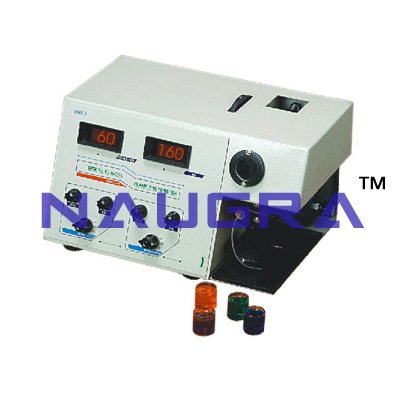
Product Code: AE0003
Description:
Dual Channel, Mixing Chamber designed for stable flame, Stainless steel round burner, Concentric Non-Corrosive Nebulizer, Narrow Band interference Filters, Dual 2½ digit red LED display.
Microprocessor Flame Photometer is an ideal instrument for the determination of Sodium, Potassium, Calcium and Lithium in single aspiration of sample. It uses the latest microcontroller technology and advanced engineering techniques so as to give enhanced accuracy and reproducibility. It has soft touch membrane keys for ease of operation. The solution is aspirated through an atomiser. Air, sample and the fuel are mixed in the mixing chamber which is then sprayed as a very fine mist into the flame. The color of the flame is changed depending upon the concentration of elements present. Radiations from the flame passes through the sensing system and specific narrow band interference filter which permits only the characteristic radiation to pass the photo-detector. The output of the photo-detector is then processed by the microcontroller and the final results displayed on the digital display. The 5 point calibration facility and non-linearity correction is provided through an automatic curve fitting software. Facility has been provided for re-standardization with a single standard, thereby, eliminating the need of multiple standards once a calibration has been performed.
FEATURES :
µP based with Printer Interface
Four element measurement in single aspiration of the sample
Calibration Curve Programmability Curves saving facility
Samples Data Storage Facility
Printer/ Attachment Facility
Measurement in ppm and meq
Useful for both medical and soil testing applications.
Compression unit:
Air Supply : By oil free mini compressor unit with pressure regulator
Combustion Gas LPG : Controlled by precision regulator
Power : 230V ±10%AC, 50 Hz
Specification: